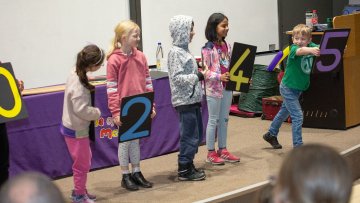Automated quantitative myocardial perfusion MRI
Abstract
Stress perfusion cardiac magnetic resonance (CMR) imaging has been shown to be highly accurate for the detection of coronary artery disease. However, a major limitation is that the accuracy of the visual assessment of the images is challenging and thus the accuracy of the diagnosis is highly dependent on the training and experience of the reader. Quantitative perfusion CMR, where myocardial blood flow values are inferred directly from the MR images, is an automated and user-independent alternative to the visual assessment.
This talk will focus on addressing the main technical challenges which have hampered the adoption of quantitative myocardial perfusion MRI in clinical practice. The talk will cover the problem of respiratory motion in the images and the use of dimension reduction techniques, such as robust principal component analysis, to mitigate this problem. I will then discuss our deep learning-based image processing pipeline that solves the necessary series of computer vision tasks required for the blood flow modelling and introduce the Bayesian inference framework in which the kinetic parameter values are inferred from the imaging data.
Cancelled: Training Linear Neural Networks: Non-Local Convergence and Complexity Results
Abstract
This talk has been cancelled.
Skein-triangulated representations of generalized braid categories
Abstract
The ordinary braid group ${\mathrm Br}_n$ is a well-known algebraic structure which encodes configurations of $n$ non-touching strands (“braids”) up to continious transformations (“isotopies”). A classical result of Khovanov and Thomas states that there is a natural categorical action of ${\mathrm Br}_n$ on the derived category of the cotangent bundle of the variety of complete flags in ${\mathbb C}^n$.
In this talk, I will introduce a new structure: the category ${\mathrm GBr}_n$ of generalised braids. These are the braids whose strands are allowed to touch in a certain way. They have multiple endpoint configurations and can be non-invertible, thus forming a category rather than a group. In the context of triangulated categories, it is natural to impose certain relations which result in the notion of a skein-triangulated representation of ${\mathrm GBr}_n$. A decade-old conjecture states that there is a skein-triangulated action of ${\mathrm GBr}_n$ on the cotangent bundles of the varieties of full and partial flags in ${\mathbb C}^n$. We prove this conjecture for $n = 3$. We also show that, in fact, any categorical action of ${\mathrm Br}_n$ can be lifted to a categorical action of ${\mathrm GBr}_n$, generalising a result of Ed Segal. This is a joint work with Rina Anno and Lorenzo De Biase.
Mathematics of Brain Modelling - Spatial navigation in preclinical and clinical Alzheimer’s disease
Booking Essential ociam@maths.ox.ac.uk
Abstract
Spatial navigation in preclinical and clinical Alzheimer’s disease - Relevance for topological data analysis?
Spatial navigation changes are one of the first symptoms of Alzheimer’s disease and also lead to significant safeguarding issues in patients after diagnosis. Despite their significant implications, spatial navigation changes in preclinical and clinical Alzheimer’s disease are still poorly understood. In the current talk, I will explain the spatial navigation processes in the brain and their relevance to Alzheimer’s disease. I will then introduce our Sea Hero Quest project, which created the first global benchmark data for spatial navigation in ~4.5 million people worldwide via a VR-based game. I will present data from the game, which has allowed to create personalised benchmark data for at-risk-of-Alzheimer’s people. The final part of my talk will explore how real-world environment & entropy impacts on dementia patients getting lost and how this has relevance for GPS technology based safeguarding and car driving in Alzheimer’s disease.





